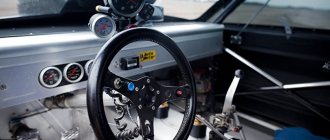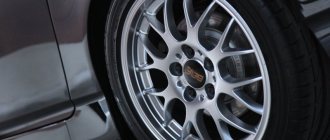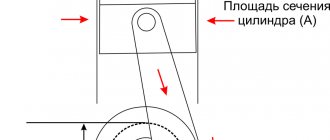Life shows that most motorists, be they respectable veterans or inexperienced beginners, are sensitive to their beloved Columbine. This is expressed, among other things, in the fact that the latter spend a lot of time and effort on car care. And this pays off handsomely, since it makes it possible to significantly extend the life of the car, maintain its appearance, and also minimize the likelihood of road accidents. Let's figure out how to properly care for your car.
[toc]
Preface
Taking care of your “steel friend” comes down not only to caring for the body, engine, chassis, gas tank or liquefied gas container, electronics and battery. All this is very important. But a wise approach to car care also consists of timely receipt of professional services, refueling with high-quality gasoline, diesel fuel, gas, fuels and lubricants.
It would seem that against this background, careful driving is significantly less important. However, this is not quite true. There is an opinion that it is the behavior of the driver behind the wheel that determines not only the condition of the car, but also the health and sometimes the life of the driver.
Previously, the opinion was often expressed that proper care involves mandatory warming up of the car before going on the track. Oil that has thickened during parking, according to this judgment, requires bringing the engine to at least room temperature.
However, now some experts advise not to waste time warming up the car while idling, even in winter. In their opinion, this only leads to unjustified and senseless fuel consumption and loss of time. They believe that it is enough to drive at low speed for the first few minutes without sudden jerks. This driving mode will allow you to warm up the engine much faster while driving without the risk of damaging it.
We especially note that smooth acceleration without jerking and avoidance of sharp braking except in emergency cases contributes not only to economical consumption of fuels and lubricants, but also to reduced wear of the engine and brake pads. Unfortunately, this simple secret is not so easy to use.
The driver's temperament is his objective characteristic, and hot blood, as is known, pushes to exploits. In this case, it is advisable for the driver of a modern car to use cruise control, which allows you to maintain the desired speed without pressing the accelerator. It is generally accepted that this function can effectively discipline even a reckless driver. However, unfortunately, temperament can find its way out in sharp turns and lane changes.
On your own or with professionals?
Visiting service stations, voluntarily or involuntarily, develops in drivers an understanding of how to properly care for a car. Indeed, amateurs have a lot to learn from professionals and a lot to adopt in caring for their vehicles.
The history of vehicle operation, which dates back about one and a half centuries, has proven the importance of timely maintenance. Driver discipline is manifested not only in accident-free driving and compliance with traffic rules, but also in strict adherence to maintenance deadlines. Engine oil, brake fluid and wear parts must be changed within the time limits set by the vehicle manufacturer. Since this cannot be done in a garage, it is better to leave this work in capable hands that can provide professional car care.
It is advisable for drivers not to look down on service station workers, but to listen to what advice they give on car care. For example, car tires can be treated by professionals with so-called “liquid rubber”, which is a good preservative and increases the wear resistance of the wheels, especially in winter. Even washing an expensive car is better not done by yourself, but in a specialized car wash.
But in caring for the plastic of the car interior, the forces of amateurs and professionals can be combined. Drivers themselves should regularly vacuum and wipe plastic parts with a wet fiber cloth and then with a dry rag. It is better to entrust the processing of these accessories with special devices and chemicals to service station employees.
A car is an important part of many people's lives and requires a lot of attention and work, whether it's new or used. It needs to be well taken care of to ensure its reliability and prevent service interruptions. Used cars especially need extra attention because they are more difficult and expensive to maintain than new cars.
With regular maintenance, you can be confident that your vehicle's lifespan will be greatly extended and your vehicle's performance will continue to be at its peak. Timely car care and maintenance will help you save some money on repairs.
Here are some basic car care and maintenance tips that we recommend you follow.
1. Do not increase the speed of the car engine immediately after starting, as this will lead to rapid wear of the car engine. Accelerate slowly when you start moving. Shifting to neutral when at a red light will give the engine some time to rest. Be careful with your car and you will be rewarded with a longer time between repairs.
2. Wash your car once a week to keep your car clean. Don't forget to clean the inside of your car as well. Dirt particles are abrasive, and spilled liquids such as sodas and juices can cause corrosion. Wipe the glass on the dashboard with a soft, damp cloth. Take out the rugs and wash them. Otherwise, dirt, if not removed for a long time, can cause wear and tear on the mats. Dry the mats thoroughly in the sun before placing them in the car.
3. Wax your car frequently. A growing layer of wax on a car regularly protects its paintwork, thereby slowing down oxidation and creating a barrier against dirt and bird droppings. It also makes the car look good by adding extra shine.
4. Parking your car in the shade prevents the interior from being damaged by ultraviolet rays and protects the car's paintwork. If a shady area is not available, use a car shade to minimize sun exposure.
5. Change the engine oil and filter regularly. Many car owners increase the interval between oil changes. But frequent oil changes are still necessary, especially if you're working on a used car. Frequent oil changes will remove metal particles from the engine, thereby extending its life.
6. Check your tire pressure regularly and keep them inflated to the recommended pressure as stated in your owner's manual. The cause of insufficient tire pressure is uneven wear. Uneven wear, in turn, suggests premature brake or shock absorber wear, internal tire damage, or a possibly bent wheel.
Wheel alignment is checked every 50,000 km. Improper wheel alignment reduces tire life and also causes steering problems. If your car pulls to one side, then you should check your wheel alignment.
7. Wash your car engine at least once a year. A clean engine does not overheat like a dirty one. A clean engine also makes it easy to identify leaks and service engine components. Before you start washing, make sure to protect sensitive engine parts, including the air intake, electrical parts with plastic bags. You can use detergents and brushes to clean the engine.
8. Many manufacturers recommend replacing spark plugs every 50,000 km, which guarantees good mileage, high engine performance and fuel economy.
9. Carry out regular battery maintenance. It doesn’t matter whether the manufacturer provides battery maintenance or not, it is still necessary to regularly check the car battery to extend its service life. Start by keeping your battery terminals clean. You can wipe them with a damp cloth and a little detergent. Also check the battery case for damage. Bulges or cracks are signs that the battery needs to be replaced.
10. Choose a reliable car service for your car. No matter how professionally you drive your car, damage or accidents are inevitable. In this case, you need to have a car service that you can trust. Choose a maintenance service that replaces damaged parts only with original spare parts from the manufacturer and can provide repair guarantees.
How to care for your car in winter?
In the old days, when the talk of the town was the imperfection of domestic cars, their anti-corrosion protection and power supplies, winter preservation of cars was more natural than an exotic measure.
Progress in the automotive industry and the creation of protective equipment and electronics has made it unnecessary to park the car and take the battery to a warm room for the whole winter. Accordingly, the practice of care during the winter period has also changed. For example, the cooling system of a car and glass and headlight washers are currently, as a rule, not refilled with water or cheap vodka, high-quality antifreeze (antifreeze) and windshield washer fluids.
Another useful form of car care in winter is changing summer tires to winter ones, which are less sensitive to ice. Living in rural and even suburban areas often requires the use of studded tires and sometimes chains on the wheels. They significantly increase the vehicle’s cross-country ability and allow you to get out of deep snowdrifts and frozen tracks without slipping.
High-quality care in winter involves regular monitoring of the condition of the underbody of the car. The ingress of sand, salt, and anti-icing agents onto the bottom can cause damage and destruction of the protective coating. It is advisable to treat the bottom of the car with a protective coating before starting to use it in winter.
Video about winter car care
Secrets of winter car care
If the car owner undergoes regular maintenance and follows the recommendations of the car service center and the car manufacturer for operating the car, then minor temperature changes will not affect the performance properties in any way. However, this is all under ideal conditions.
Car electrics in winter
Sudden temperature changes and temperature instability often lead to failures in the electrical and electronics of the car. The problem is that when the temperature rises on the wiring, condensation . Electricity is not friendly with moisture. Fortunately, modern cars are well protected from this, but anything can happen.
Therefore, if a problem appears (the indicator on the instrument panel lights up, the car is unstable), and it does not go away even after warming up the engine and interior, then the only way out is to put the car in a warm garage for a day. This way the car will dry thoroughly and this will be enough for everything to be restored.
Taking care of your car in winter is extremely important; high air humidity can significantly affect not only instruments and sensors, but also the operation and starting of the engine. Poor condition of high-voltage wires can lead to the engine not starting. In this case, they will need to be replaced.
Car battery care in winter
In addition, in winter, with a sharp change in air humidity, severe oxidation of the battery terminals . One of the reasons why the engine may start poorly in winter. Under no circumstances should you ignore terminal oxidation. Because Even with a working battery, the deposit on the terminals acts as an insulator and does not allow electric current to pass through. Solving the problem is quite simple:
- The terminals are removed from the battery;
- Cleaned with sandpaper;
- Installed in place;
- Treated with grease.
Caring for car wipers in winter
Another problem that car owners often encounter is frozen windshield wipers . Most often everyone encounters this in the morning. The moisture that accumulates on the windshield during the day turns into ice overnight. It is very important to know how to care for your car in winter in such a situation. What to do in this case?
To avoid the wiper blades freezing to the windshield, you must turn on the wipers and washer before leaving the car overnight. This will allow the windshield wiper rubber bands to be well coated with anti-freeze . And in the morning you definitely won’t find yourself in a similar situation.
You can also simply raise the windshield wipers in winter during precipitation, or leave them in the yard overnight, this way you will avoid freezing. But some here have the opinion that the spring of the wipers in this position stretches and ultimately presses the windshield wipers poorly against the glass.
Check the fluid level in the windshield washer reservoir. Car owners often forget about it. For some, it freezes completely. Before winter, check the level and fill with a special antifreeze fluid. This way you will avoid many problems that may arise when the fluid in the washer fluid freezes.
How to care for your engine in winter
High humidity and air temperature in winter are a serious period for any equipment, and cars are no exception. Especially for one of its main components - the engine .
The engine operates in quite difficult conditions in winter. In winter, at night the engine can cool down to a temperature of -20 degrees, when the operating temperature of the engine is in the range of +90 to +115 degrees. And you also need to warm up the interior. How to care for a car in winter so that the engine suffers especially from operation in winter.
The first problem of many car owners is underheating of the engine . Most often, the reason is the driver himself, due to summer habits (got into the car, started it and drove off). In winter, the engine needs to be looked after, especially if it is a diesel engine, read the article - how to start a diesel engine in cold weather .
In order for the “heart of the car” to wake up, you need to warm up the car for at least 5-10 minutes. Motor oil and diesel fuel thicken at subzero temperatures. And if you start it without warming up and put a full load on the engine, problems may arise with it.
Worth knowing! Problems with the engine in this case are not a warranty case.
Engine overheating is also a problem that can arise in winter. The problem is the coolant (antifreeze). Leaking it can lead to overheating of the motor. Monitor the coolant level in the reservoir.
Another problem that many car owners are not aware of is poor air cooling of the radiator . This happens due to severe contamination of the radiator. This leads to the engine not being fully cooled, which leads to overheating.
The consequences of engine overheating are quite serious:
- Deformation of the cylinder head;
- The appearance of cracks in the cylinder block;
- Gasket burnout.
How to care for your car body in winter
With the onset of cold weather, it is very important to know how to care for your car in winter. When constantly driving a car on snowy roads, snow gets stuck in the fender liners . After you park your car overnight, try to hit it, because in the morning, if you don’t hit it, it turns into ice.
And it turns out that when you drive and turn the wheel out, this ice will rub against the car tire. Not only will the formed ice floe constantly rub against the wheel, but it can also break the plastic covers on the bumper.
How to care for car door locks in winter
It's no secret that with the onset of cold weather, sudden temperature changes in the car can cause the locks to freeze . On a winter morning, when you try to open the car, you press the key fob, disarming the alarm, but the door lock does not open.
You insert the key into the keyhole, and this also does not lead to success. This happens due to freezing of the lock cylinder. Moisture getting inside the lock leads to the formation of ice at subzero temperatures.
Car owners encounter this problem through their own fault. Due to ignorance of how to care for a car in winter, how to treat door locks and what preventive measures need to be carried out in winter. In the article, the best way to lubricate car door locks , you can familiarize yourself with this in more detail.
Caring for your car windshield in winter
With the onset of winter, there is a problem that the windshield becomes covered with a crust of ice . And it becomes problematic to clear the ice from the windshield and wait until everything thaws.
In order to reduce windshield freezing, it is necessary to ventilate the car interior . The bottom line is that the more you can ventilate the car interior, the better.
Therefore, in advance, 5 minutes before arriving at your house, turn off the car’s heater; if possible, you can open the side window. This method allows you to equalize the temperature outside and inside the car.










